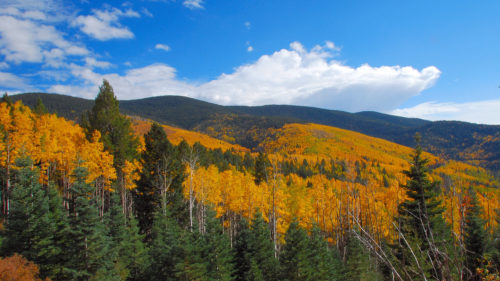On March 25, 2013 President Barack Obama officially declared Rio Grande del Norte a national monument. In 2018 we’re celebrating the monument’s fifth anniversary, which is the perfect time for all of us to take a moment and reflect upon the many adventures, memories, and intrinsic values of this majestic 242,500 acre monument that is a gift to our state and our nation.
The Rio Grande del Norte is home to many ways of life, diverse cultures, and a rich history. A truly vast landscape that is a core part of the identity of so many people that have stepped foot on it. The diverse landscape in Rio Grande del Norte provides year round protection for many of New Mexico’s iconic species like the Rocky Mountain Bighorn Sheep, Rocky Mountain Elk, mule deer, pronghorn antelope, cougar, black bear, bald eagle, and the native Rio Grande Cutthroat Trout. These species and many others call the Rio Grande del Norte home for a number of unique reasons. Antelope use the grass flats to reach speeds over 50mph. In September, the piñon-juniper volcanic cones erupt with bugling elk and later in the year provide refuge for migrating, wintering, and calving elk. Exploring the sage covered hills, one will likely encounter foraging Mule Deer vanishing at the first sight of your presence. Rocky Mountain Bighorn Sheep use the near vertical basalt cliffs to escape predators in a display of evolutionary athleticism unlike that of any animal that calls the National Monument home. November through January the intense power of the Rio Grande can become muffled by the loud thunderous booms that can be heard echoing off the canyon walls where male Bighorn Sheep clash skulls competing for a coveted ewe. Avid anglers who dare to scale the 800’ Rio Grande Gorge have the possibility of encountering the elusive native Rio Grande Cutthroat Trout, New Mexico’s iconic state fish.
The diverse ecosystems within the Rio Grande del Norte National Monument and the surrounding landscape create critical wildlife corridors providing increased habitat connectivity for many of New Mexico’s most valued species. The national monument, a pristine landscape, allows for wildlife to move freely promoting decreased disease rates and over-all genetic viability. Many animals will migrate on and off the Rio Grande del Norte National Monument to surrounding federal, state, tribal, and private lands creating an opportunity for cross-jurisdictional collaboration amongst a broad group of stakeholders. This opportunity allows for an even opportunity possibility to protect and manage wildlife corridors and critical habitat.
Without the protections afforded by the national monument, the landscape is threatened by fragmentation such as increased road development, more fences, urban and industrial development, and more disturbances that can severely decrease the survival and viability of many wildlife species. As Aldo Leopold once stated, “the hope of the future lies not in curbing the influence of human occupancy but in creating a better understanding of the extent of the influence and a new ethic for its governance.” Understanding and reflecting on our impact on the landscape and how this affects wildlife and developing a “new ethic” around wildlife connectivity allows us to better manage our landscapes in a way that promotes protection of species and the ability for our future generations to enjoy the same opportunities we have grown to cherish.
As an avid sportsmen, cultural land user, and outdoor enthusiast, it’s only appropriate that I would be attracted to the Rio Grande del Norte National Monument. Its vast landscape has allowed me to capture and experience some of the most memorable wildlife interactions. Many days have been invested leaping over boulders hoping to catch a spawning wild rainbow, brown or native Rio Grande Cutthroat Trout. Or, sitting behind a spotting scope hoping to glass a Bighorn Sheep, elk, or mule deer. I even tested my luck at navigating the rapids of the Rio Grande River. The Rio Grande del Norte in a sense has spoiled the many visitors and residents that call it home. We have grown accustomed to the amazing landscape, wildlife, cultural, and historical imprint. It’s important to take a step back to really see and remind ourselves about the amazing qualities, opportunities, and values the Rio Grande del Norte protects. A truly unique place unlike any other that without national monument designation could and most likely would face negative impacts to the land, water, wildlife, and way of life for many individuals and communities. From a personal perspective, whenever I leave the Rio Grande del Norte National Monument I find myself looking back, excited for the next opportunity and memory I get to make on our Rio Grande del Norte National Monument.



